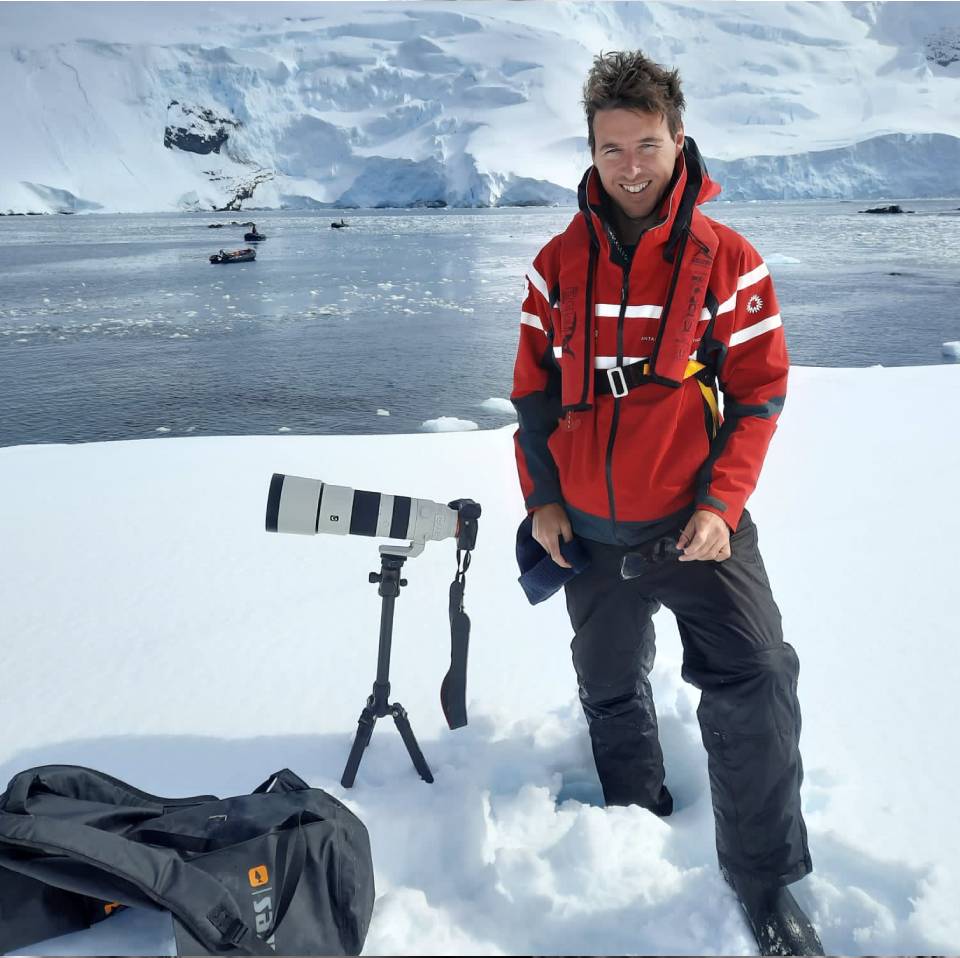Antarctica is one of the most dramatic landscapes on earth. Sheer rock rises up from ice, whilst icebergs look as though they have been masterfully carved. Then there is the wildlife. Thousands of penguins, seals, and whales are all guaranteed sightings on voyages to Antarctica.
It is no wonder then that Antarctica is many a photographer’s dream. On your cruise you are bound to notice the many professional looking cameras and big lenses. But for most people visiting Antarctica, a simple smartphone will be their only tool for capturing photos.
Never underestimate a camera phone though, especially these days as the cameras continue to get more and more advanced.
To help you get the most out of your camera phone in Antarctica, we have written our top tips below.
Choose the right weather
There is a reason why photographers call the dawn and dusk period the ‘Golden hours’. This is when the light is low and diffused which gives everything a very natural colour and feel.
This is also the period when the sky will have the most colour. Any picture you take is going to look a lot better with some nice colour in the sky.
Don’t be afraid to photograph cloudy and gloomy skies. This creates a lot more atmosphere to photos and often produces a much more interesting final image than a standard blue sky photo.
Get the horizon straight
We see so many photos of Antarctica where the photographer has not even bothered to get the horizon straight. Yes, it can be tricky on a moving zodiac, especially in rough weather, but it is definitely worth making the effort as a wonky horizon looks very amateurish.
The best tool to help you get a straight horizon is a grid overlay on your camera. You can find this on most modern phones in the Settings section, under Camera. Just match up the horizon of the sea against the straight lines of the grid and voila - a straight horizon!

Rules of Thirds
The Rule of Thirds is a composition technique that has been used by photographers since the dawn of cameras.
The rule states that points of interest in photos should be divided into 9 equal parts and that points of interest, such a human, penguin or iceberg, should be placed on the intersecting points, both vertical and horizontal.
This also applies to horizons, but not always. Sometimes having something dead centre will look best. Just play around with it and remember, every rule is there to be broken!
Get the settings and exposure right
Amazingly, not all camera phones are automatically set up to take the highest quality images. This is often to save space as big images can be quite heavy on file size.
For your Antarctica adventure though, it is definitely worth going into your camera settings and making sure you have the highest resolution selected.
Not many people also realise that you can change your exposure settings when taking a photo. On an iPhone for example, you can tap certain areas of the photo to adjust brightness levels. If you want to get more exact though, you can tap an area and wait for the yellow box to appear with a sun symbol, you then just slide the sun symbol up or down to adjust the brightness manually.

Use burst mode for wildlife
Blink and you’ll miss it. That is how fast some wildlife encounters happen. One moment there is an orca next to your zodiac, the next it is gone.
Capturing these moments is key and to give yourself the best chance, try using burst mode on your phone. If you have one of the latest smartphones, you simply need to hold down the shutter button on your screen and your phone will keep taking photos in quick succession until you stop.
This is also a great idea when taking pictures of wildlife walking or swimming as it gives you loads of options to choose from. Any photos you don’t like you can just delete to save space.

Think outside the box with your compositions
Sadly, the majority of people come home from Antarctica with very similar photos and very similar compositions. However, if you get creative, you might surprise yourself with just how good your photos are.
The first tip is to show scale. Antarctica is a massive landscape and you can show this by having something in your landscape images that demonstrate scale. A ship is one option, as is a person.
Another great thing to try is getting low to the ground so that you are eye level with the seals and penguins. This will give your photos a more intimate feel and a more professional feel.

Use HDR
Most modern camera phones these days have a setting called HDR. This stands for High Dynamic Range. This means that when you are shooting in contrasting light, like someone standing in shadow with the sun above them, everything in the image will be exposed correctly.
High Dynamic Range works by taking multiple photos at different exposure levels and then blending them together to create one perfectly exploded photo. It sounds complicated, but luckily modern phones do this automatically and with no lag.



